Lecture 13
Mergesort
MCS 275 Spring 2023
Emily Dumas
Lecture 13: Mergesort
Reminders and announcements:
- Project 2 posted; due 6pm central Fri Feb 24.
- Project 1 grading underway.
- Homework 5 due tomorrow (notebook).
Project 2
Demo and discussion to supplement the project description.
Plan
- Discuss the theory of
- Divide and conquer
- Sorting
- Mergesort
- Implement mergesort
Divide and conquer
A strategy that often involves recursion.
- Split a problem into parts.
- Solve for each part.
- Merge the partial solutions into a solution of the original problem.
Not always possible or a good idea. It only works if merging partial solutions is easier than solving the entire problem.
Comparison sort
Suppose you have a list of objects that can be compared with ==, >,
<.
You'd like to reorder them in increasing order.
This problem is called comparison sort. There are many solutions.
Mergesort
A divide-and-conquer solution to comparison sort.
It is a fast solution, often used in practice.
Key: It is pretty easy to take two sorted lists and merge them into a single sorted list.
So, let's divide our list into halves, sort each one (recursively), then merge them.
Now we'll formalize this.
mergesort:
Input: list L whose elements support comparison.
Goal: return a list that contains the items from L but in sorted order.
- If
Lhas 0 or 1 elements, returnL - Otherwise, divide
Linto rougly equal piecesL0andL1. - Recursively call
mergesortonL0andL1. - Use
mergeto merge these sorted lists and return the result.
Mergesort example
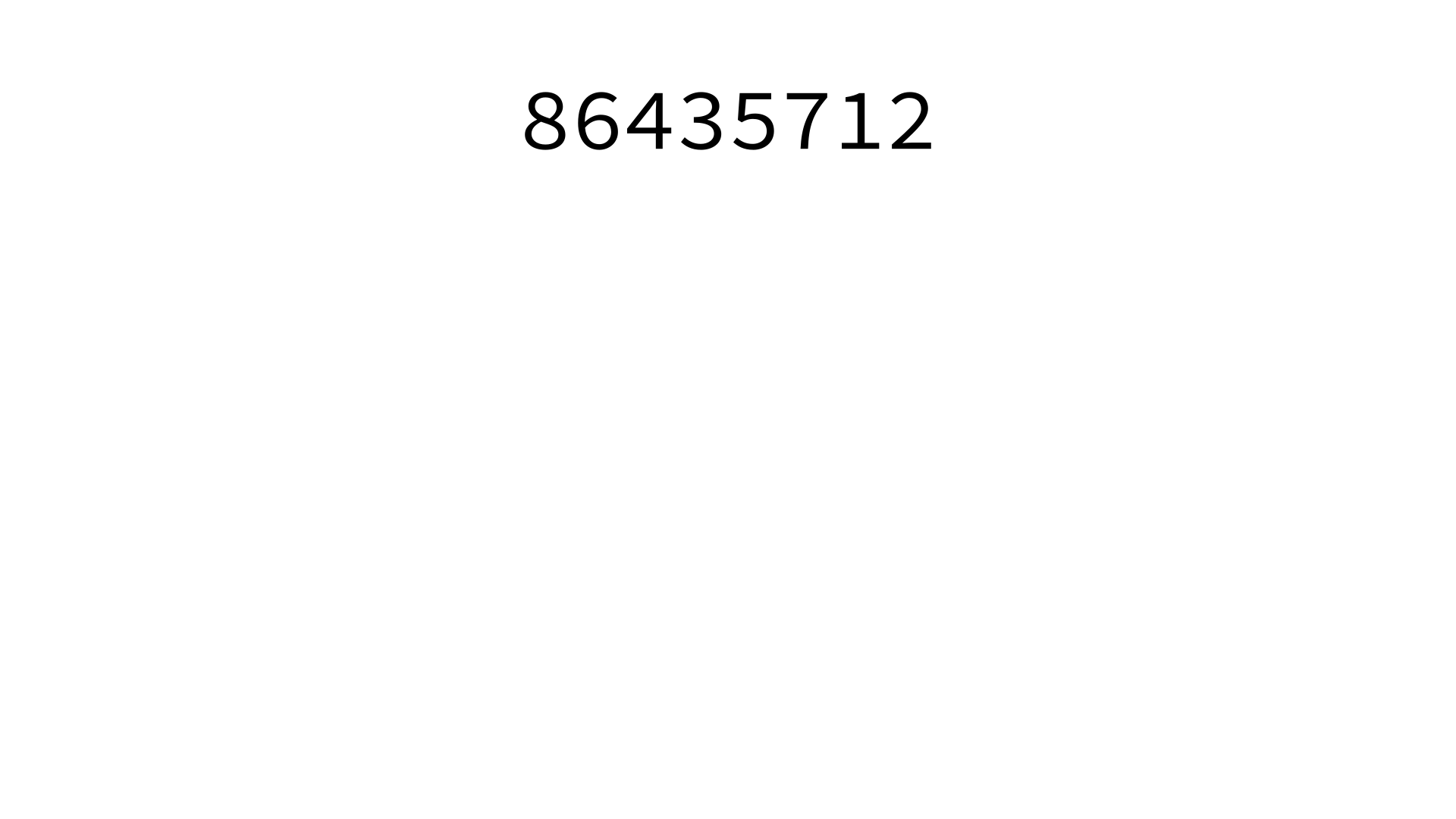
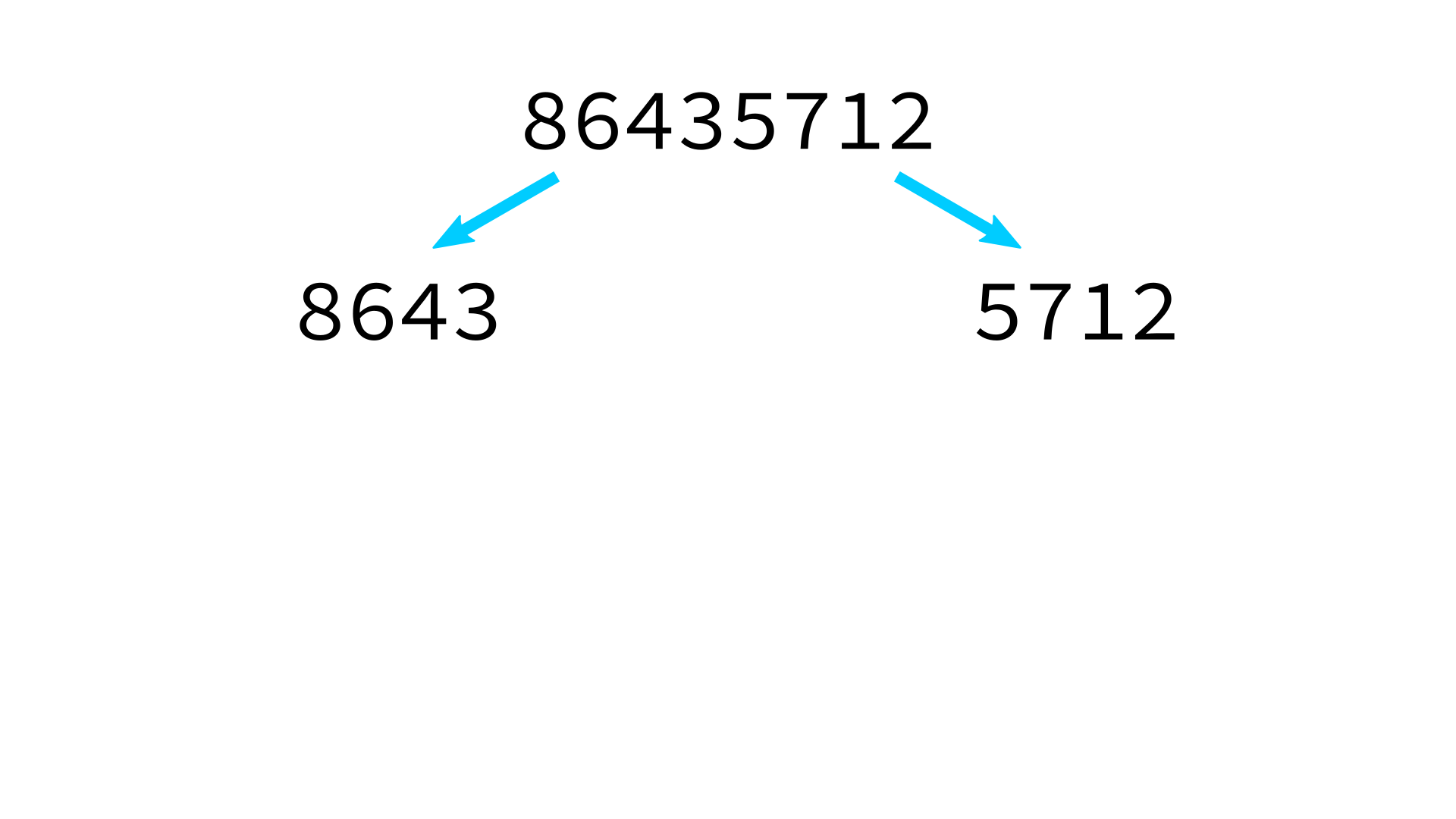
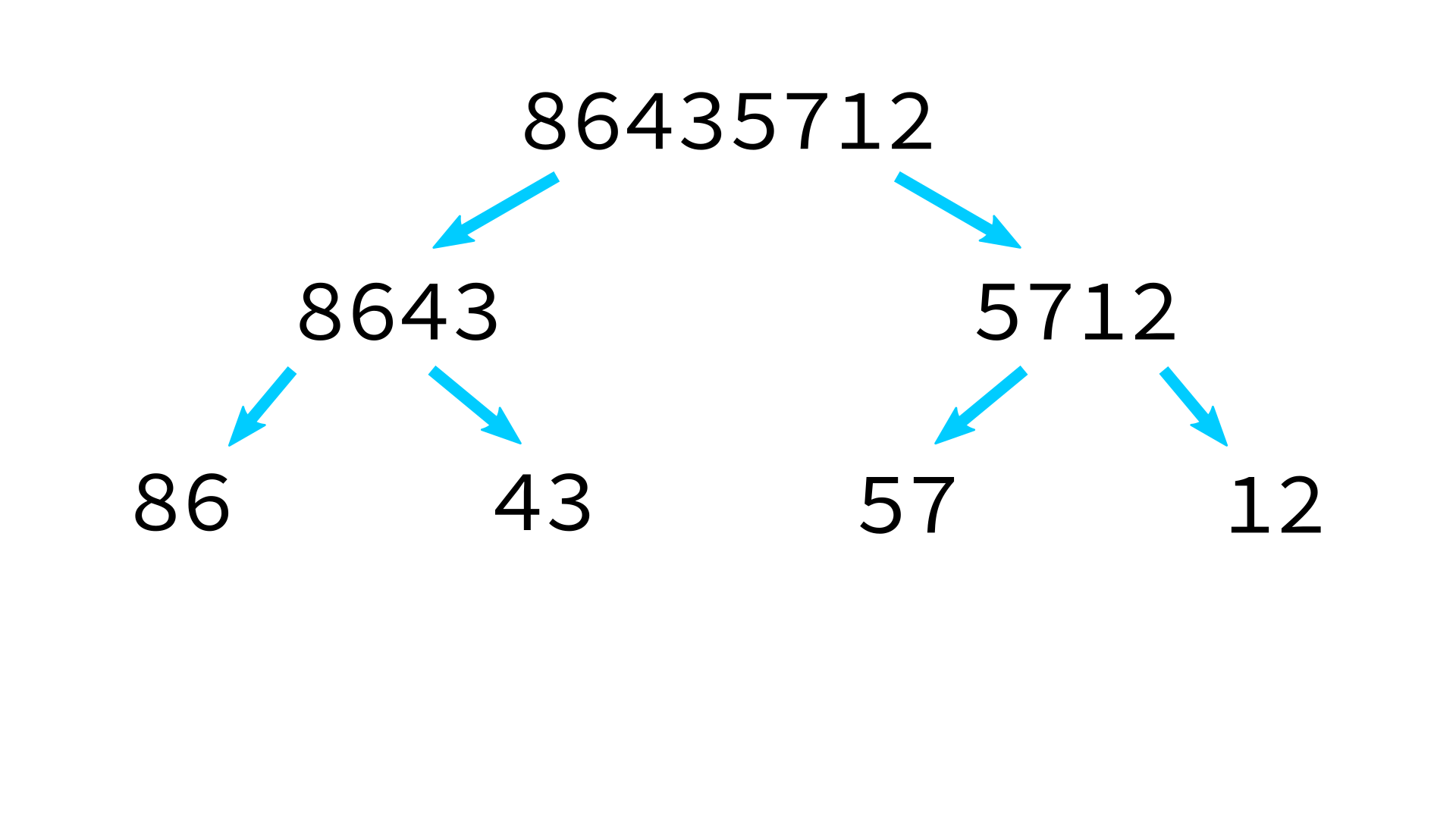
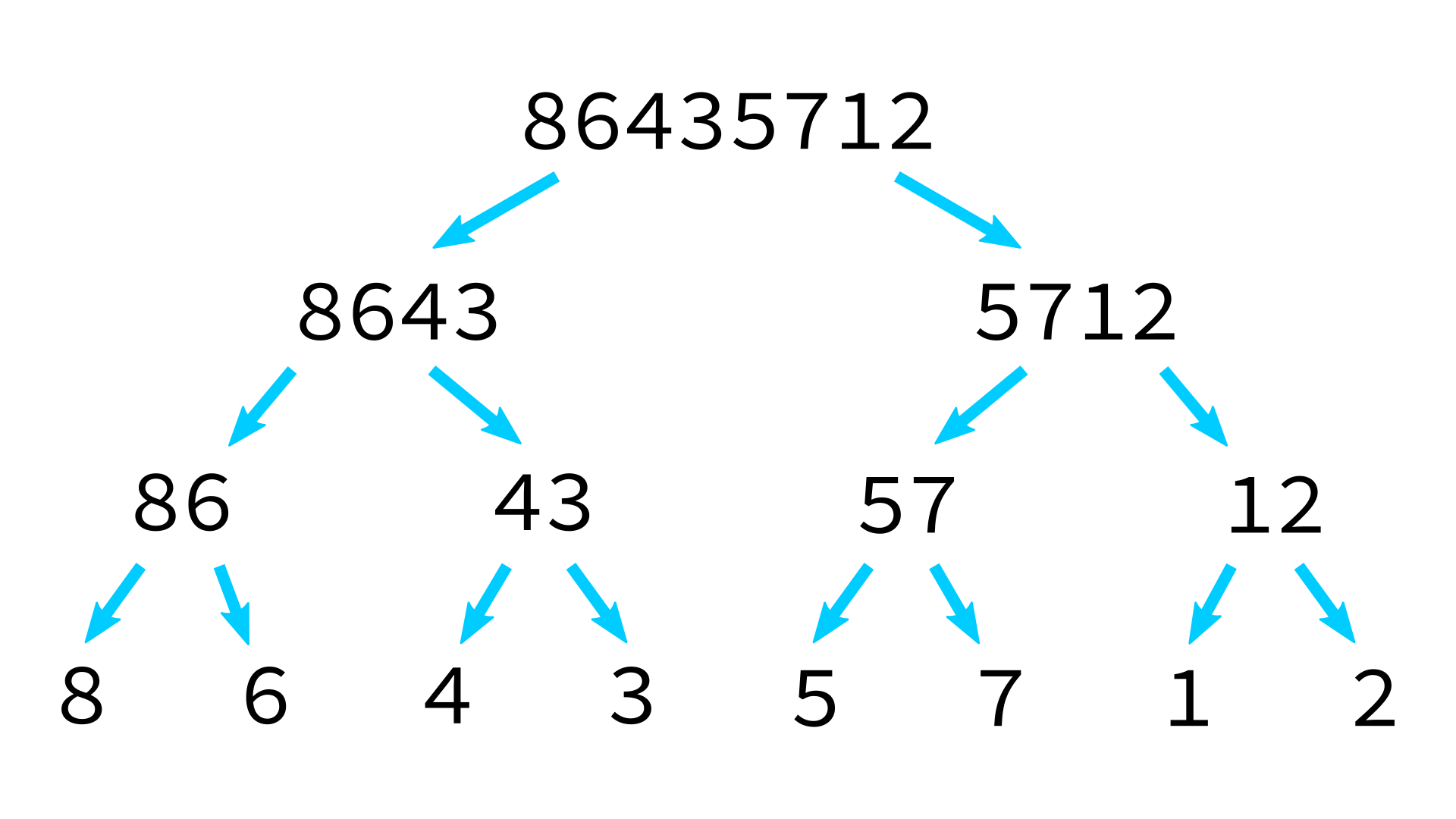
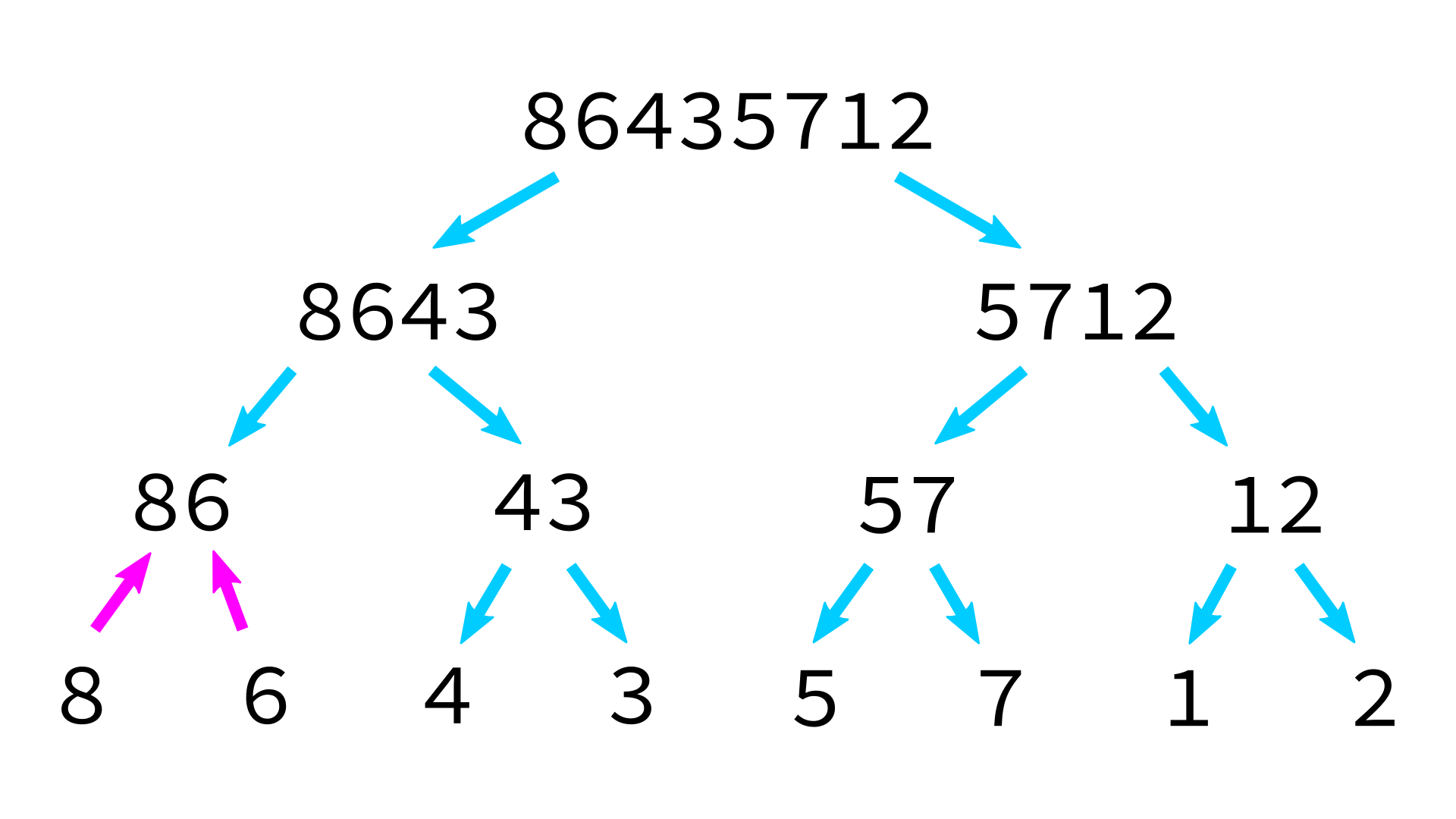
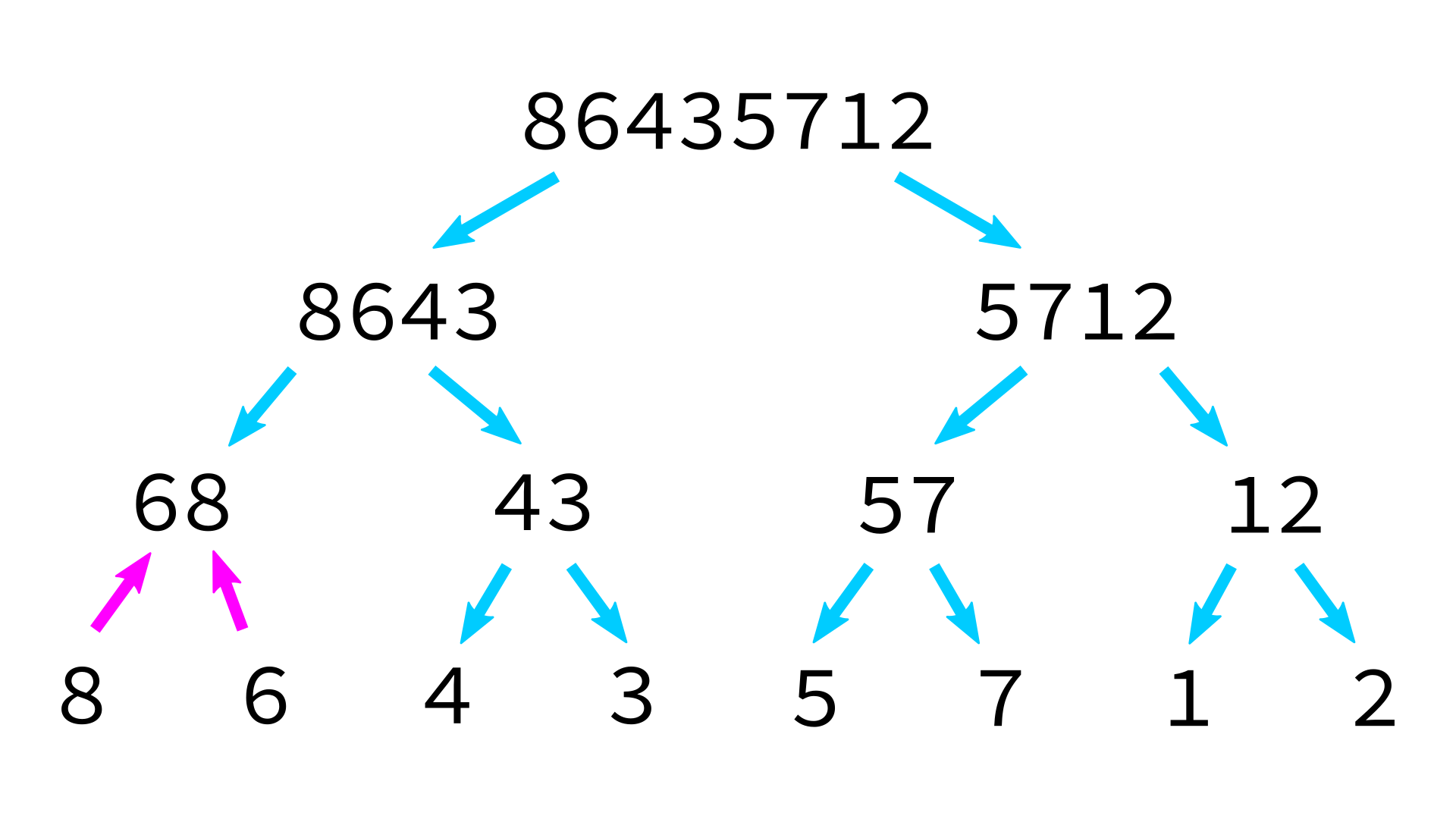
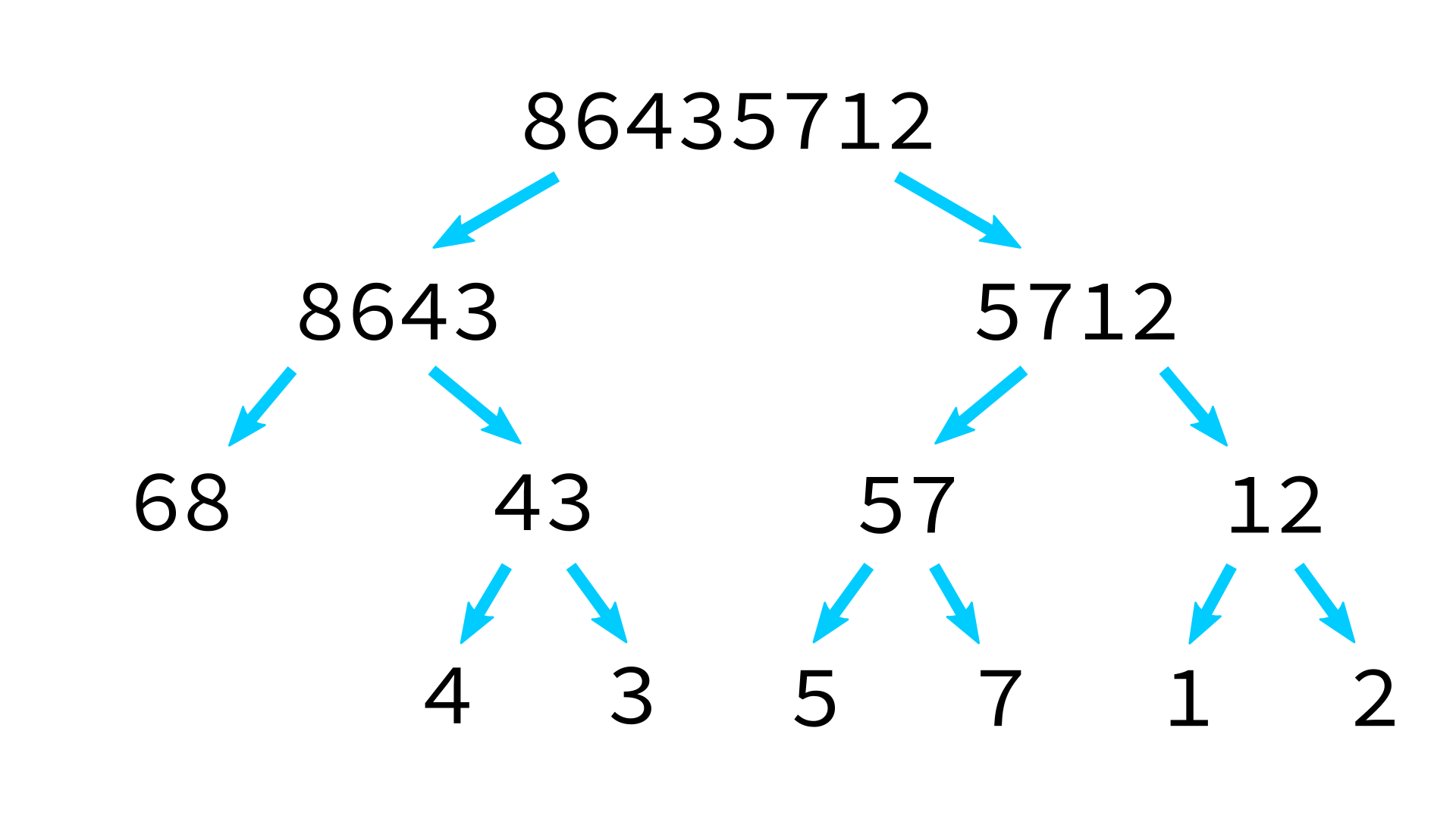
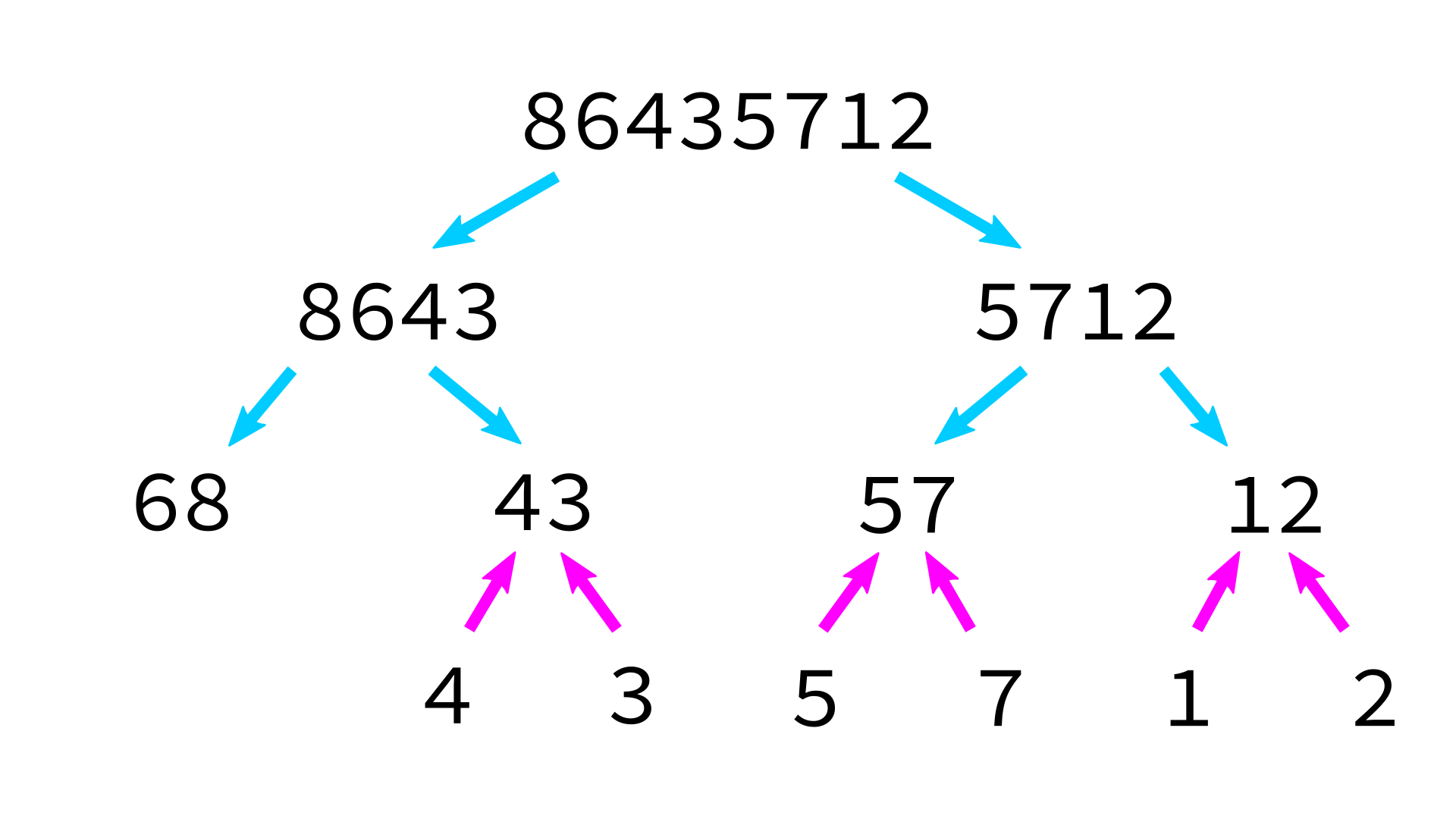
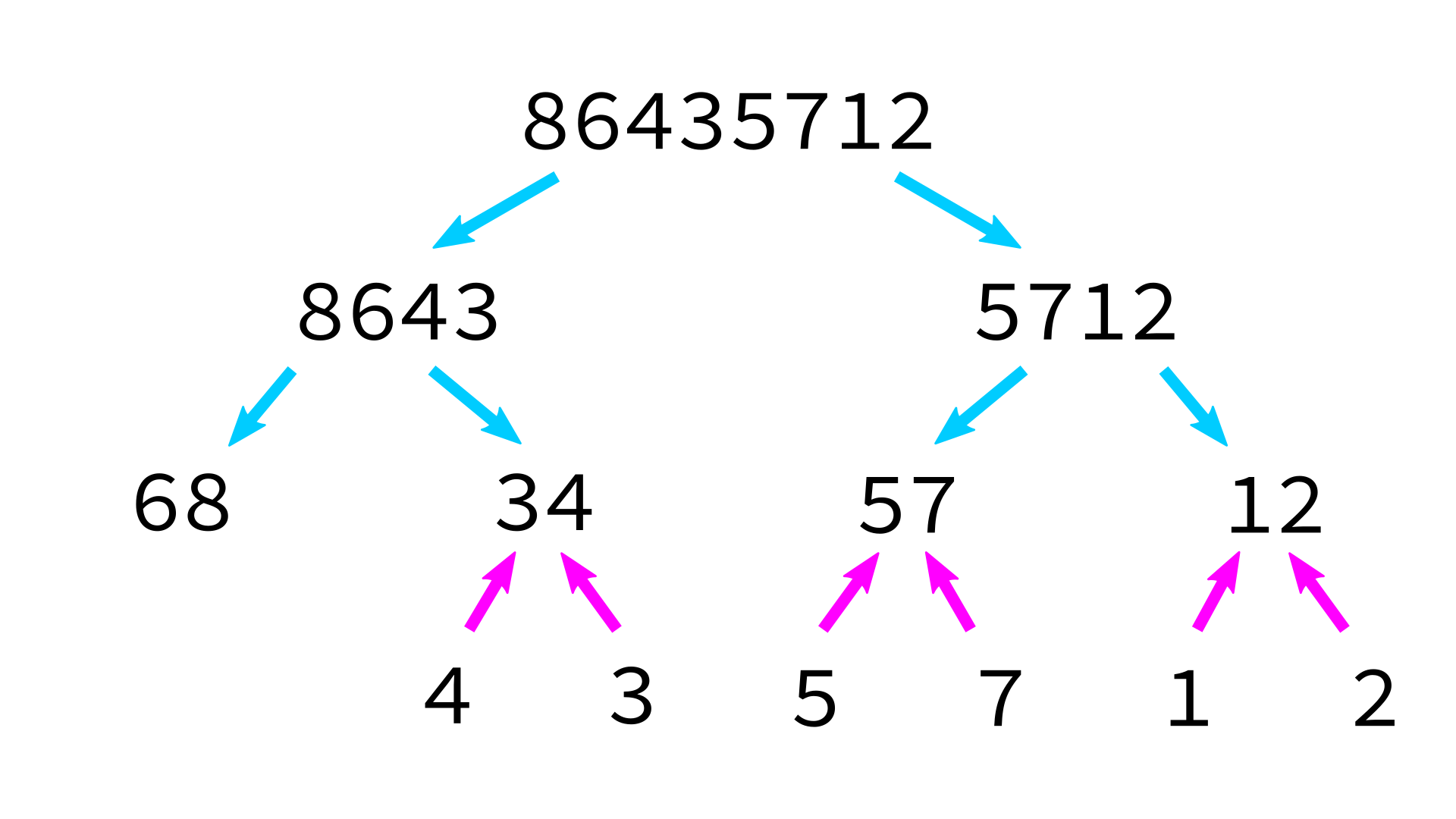
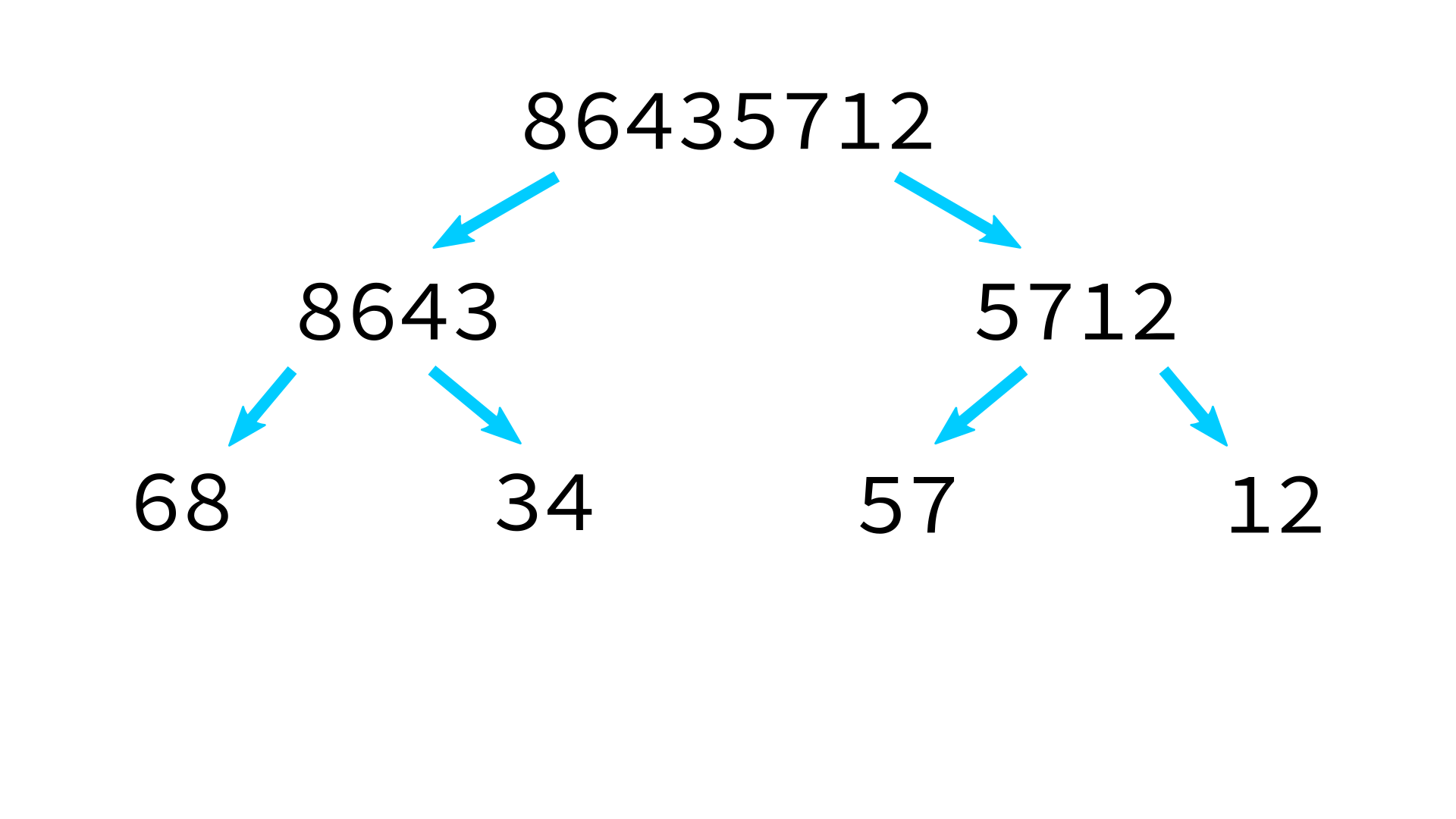
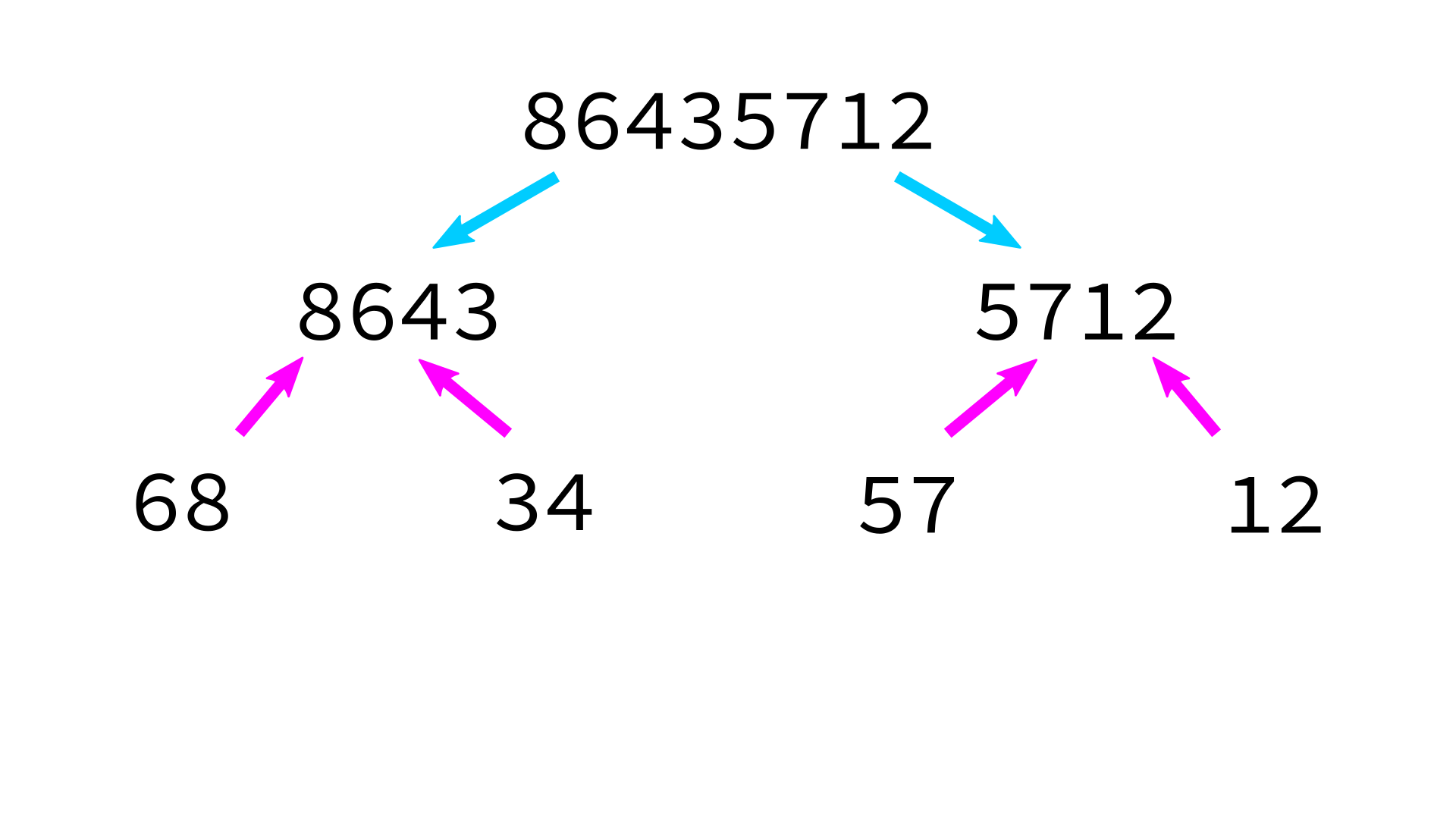
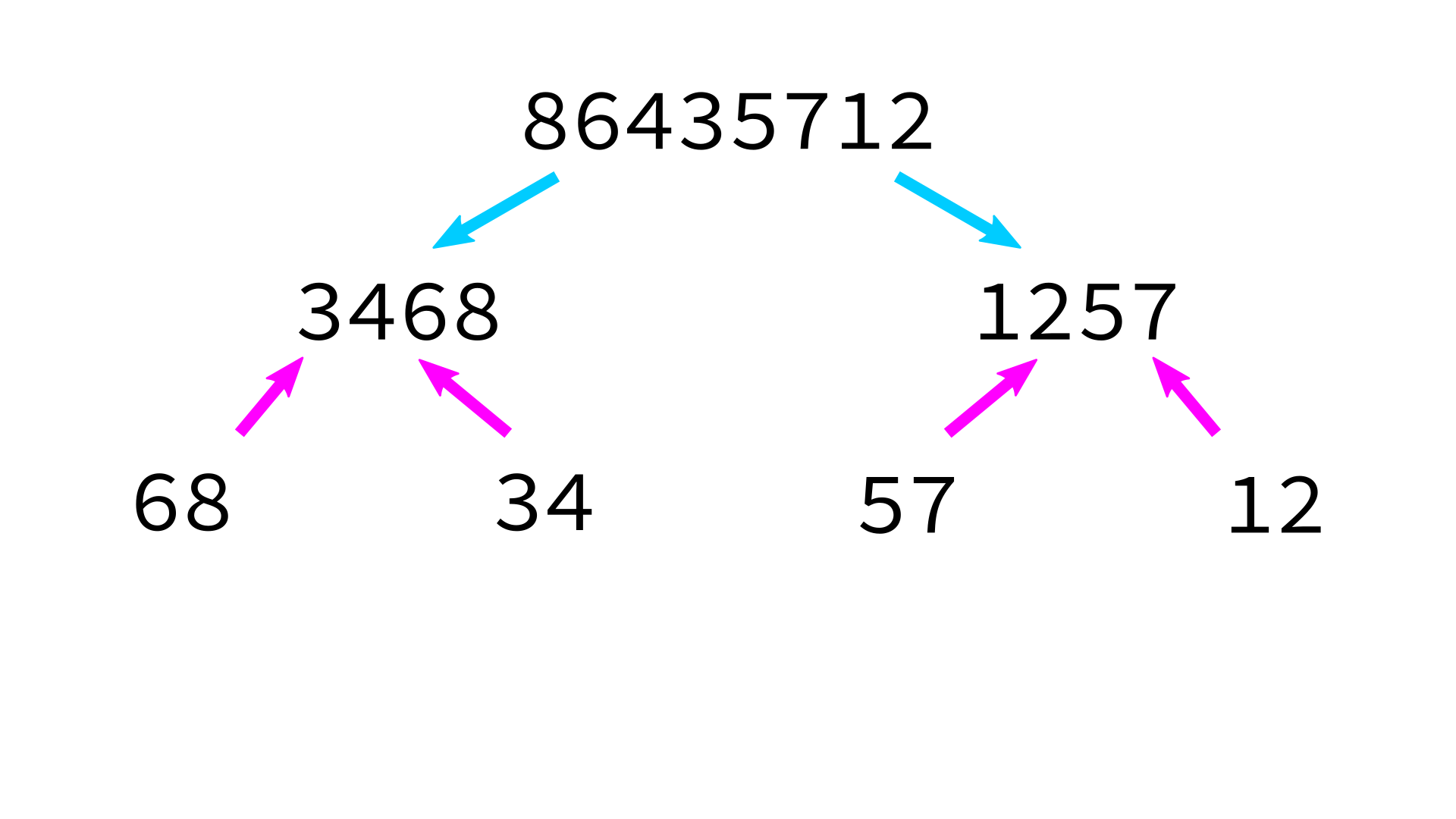
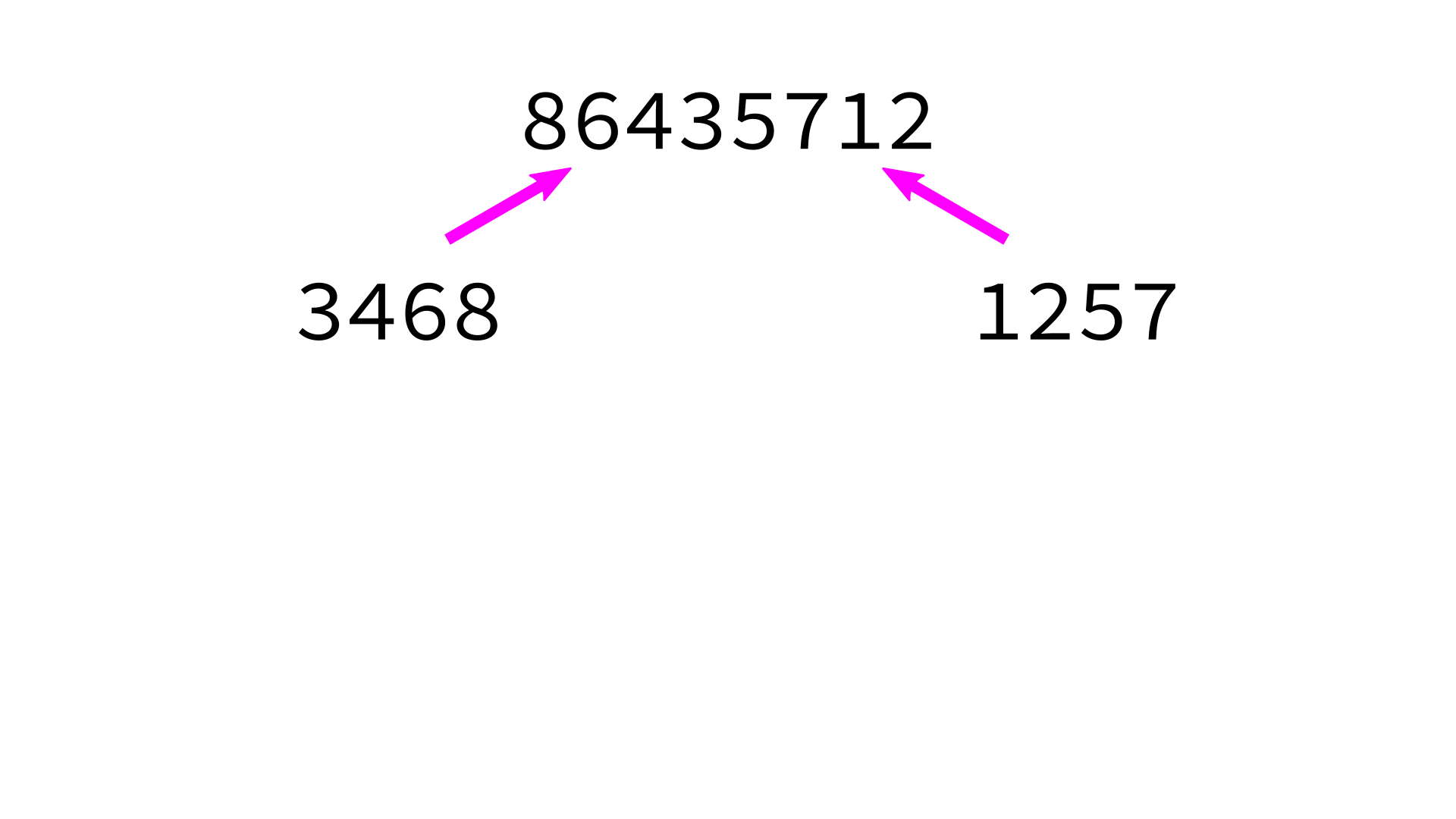
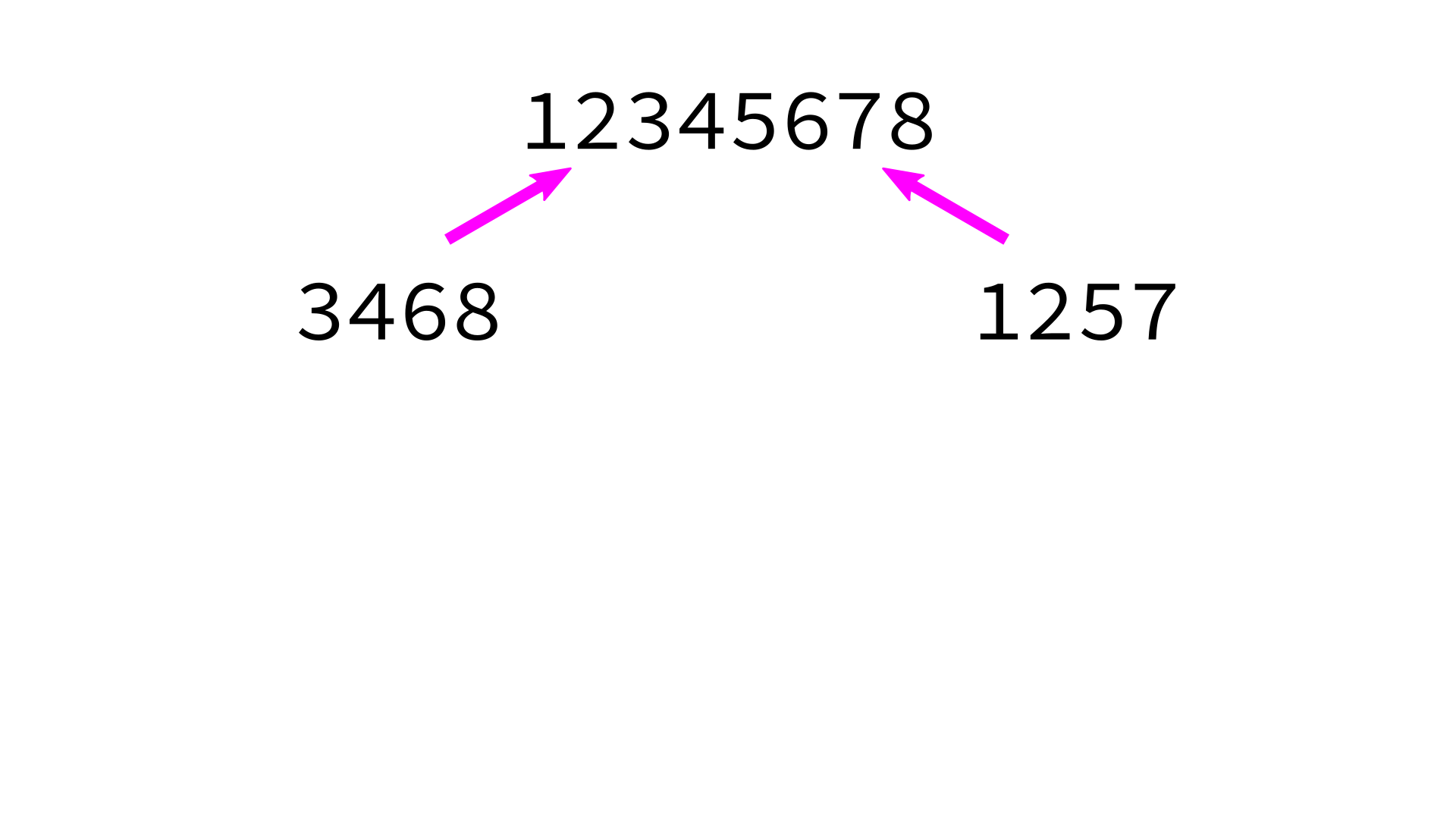
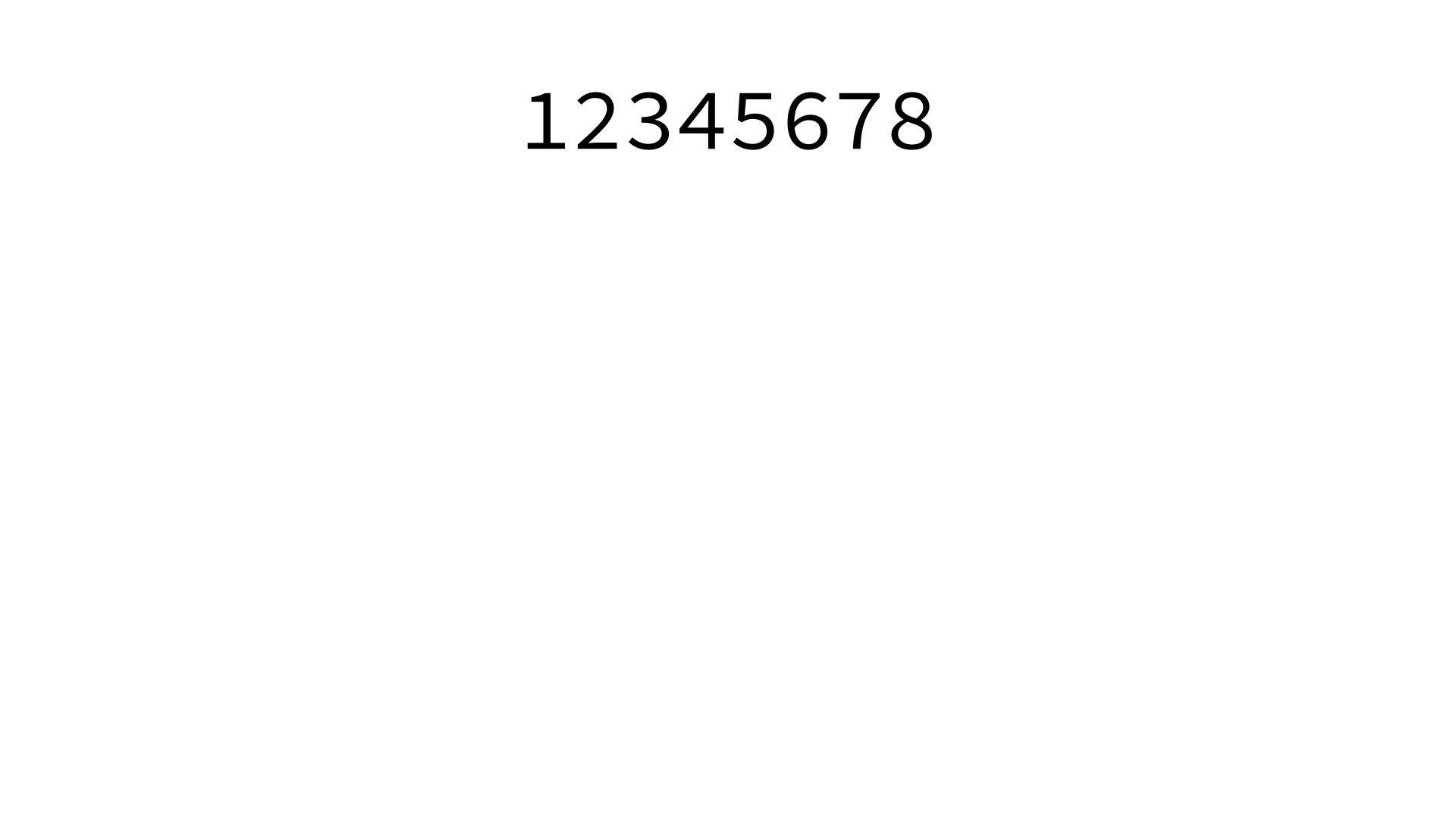
But how to merge?
This algorithm depends on having a function merge that can merge two sorted lists into a
single sorted list.
merge:
Input: sorted lists L0 and L1.
Goal: return a sorted list with same items as L0+L1
- Make a new empty list
L - Make integer variables
i0,i1to keep track of current position inL0,L1respectively. Set to zero. - While
i0 < len(L0)andi1 < len(L1), do the following:- Check which of
L0[i0]andL1[i1]is smaller. - Append the smaller one to
L. - Increment whichever one of
i0,i1was used.
- Check which of
- Append any remaining portion of
L0toL. - Append any remaining portion of
L1toL.
Merging sorted lists























Coding time
Let's implement mergesort in Python.
References
- Recursion references from Lecture 10.
- Making nice visualizations of sorting algorithms is a cottage industry in CS education. Some you
might like to check out:
- 2D visualization through color sorting by Linus Lee
- Animated bar graph visualization of many sorting algorithms by Alex Macy
- Slanted line animated visualizations of mergesort and quicksort by Mike Bostock
- 2022-02-16 Last year's version of this lecture finalized
- 2023-02-13 Updated for 2023